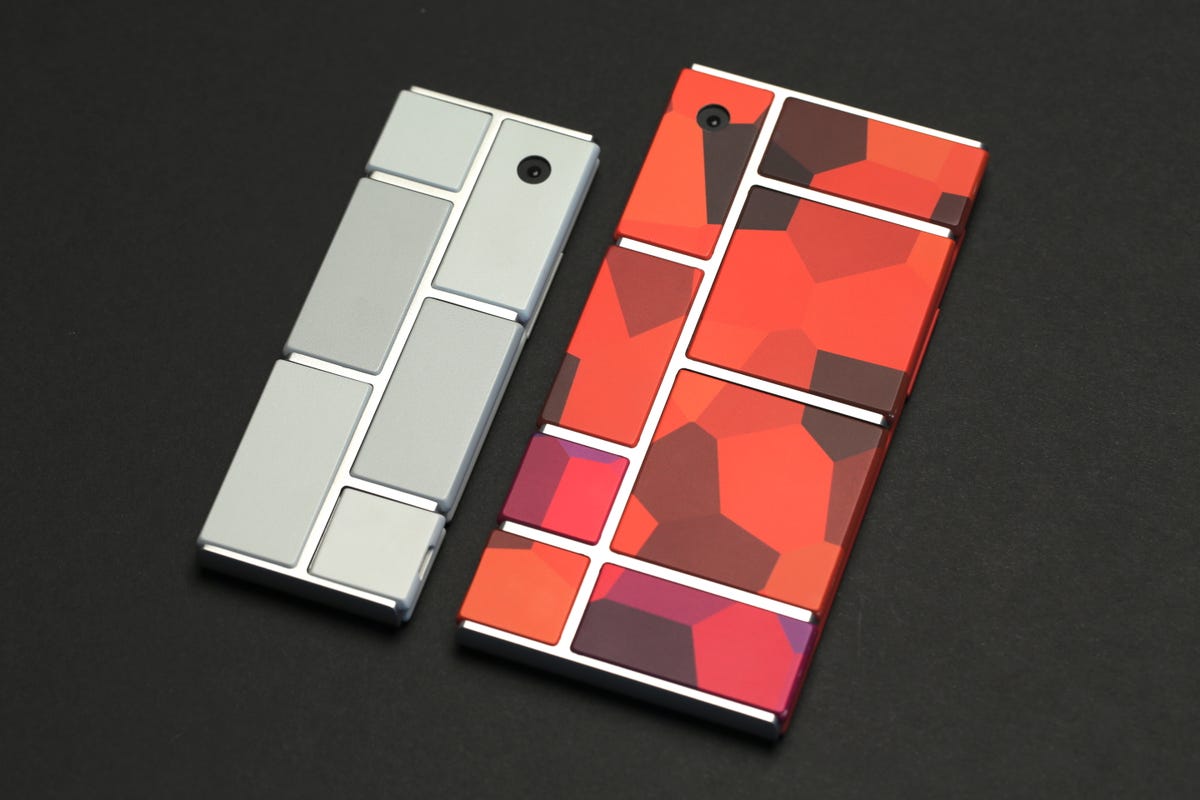
When it comes to smartphones, people are used to customizing their applications and software. But for the handset itself, they’re stuck with what the hardware maker built.
Google wants to change that.
The company on Wednesday said it will start a market pilot in Puerto Rico to test phones that will let people mix and match hardware parts, such as cameras or screens, and snap them together like Legos.
The pilot will begin later this year, and the company will use the data to plan for a global launch, Google said during a conference at corporate headquarters in Mountain View, Calif.
The project, called Ara, is Google’s attempt to create phones with interchangeable parts. That means you could choose a camera from one manufacturer, a display from another, and a processor from yet another hardware maker to build the specific phone want. When, say, the processor becomes outdated, you could swap it out for a new one. The promise is that Ara could speed up development and innovation in the separate components that make up a phone, as hardware makers begin to compete for real estate on a handset.
Google’s Project Ara lets you build your own phone (hands-on pictures)






Google makes the frame that will hold all the parts together, as well as the software that makes sure all the parts from different vendors are compatible. Several hardware manufacturers, meanwhile, will make the individual parts.
“Ara started in a very humble way,” said Regina Dugan, director of Google’s Advanced Technology and Projects (ATAP) unit, which oversees Project Ara. “What would happen if we gave people the tools and freedom to create?”
Related Stories
- Google’s modular smartphone Project Ara gets one step closer
- PuzzlePhone: An open-source Project Ara challenger appears
- Google targeting Project Ara modular phone for January 2015
Project Ara, along with other Google initiatives — from driverless cars to sensor-laden contact lenses — underscores the company’s increasingly aggressive expansion to areas outside its juggernaut search and advertising business. The company’s search engine, the largest in the world, is still a $50 billion business annually, but Google has, in recent years, looked to other avenues to figure out where future revenue streams will come from.
ATAP is Google’s answer to DARPA, the federal government’s technology and research arm. Both Dugan and Paul Eremenko, head of Project Ara, previously worked for DARPA. Other ATAP initiatives include Project Tango, which aims to advance 3D mapping technology on smartphones and tablets, and Spotlight Stories, an effort in animation software.


Google ATAP
Why is Google choosing Puerto Rico? Eremenko said it is the ideal test bed because it has a diverse user base. Its population has a good mix of smartphone and feature phone owners, and 75 percent of Internet access takes place on mobile devices, Google said. For the pilot, the company is partnering with two local carriers, Open Mobile and Claro.
The company is also working on ways for people to buy the devices. Google will set up an online market where people can choose the parts they want to use for their phones. The company is creating retail shops that look like food trucks where people can come see the products.
The company on Wednesday also talked about the next version of the prototype phone, called the Spiral 3. The criteria for success will be if the phone can stand up to a traditional state-of the-art smartphone. That means the Ara phone will need to be able to make a 4G phone call, have a good camera and offer day-long battery life, said Eremenko. He said he hopes the phone will have 20 to 30 interchangeable parts, or modules, from which customers can choose.



